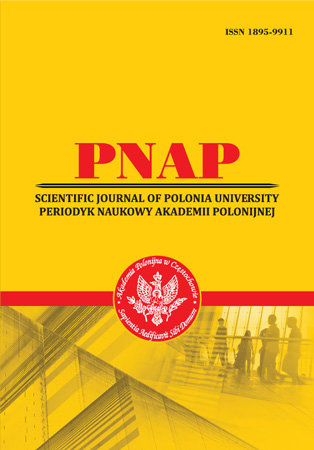COGNITIVE APPROACH TO LEXICAL VARIATION IN OVERSEAS ENGLISHES
Abstract
Modern English includes a range of standard and nonstandard varieties that are spoken around the world and differ at all levels of language structure. The purpose of this article is to overview international variation of English lexis, discover similarities intersecting this diversity, find out about productive patterns of lexical change and interpret them from a cognitive perspective. The paper demonstrates the importance of internal and external sources of borrowing, considers the ways of coining new vocabulary, gives attention to efficient strategies employed to name colonial settings and to distinguish newly forming identities from British and other English-speaking communities. Varying experience of adjustment to overseas environments stimulated a high degree of lexical change and heteronymy. Although in different regions English emerged from unique colonial contexts, speakers’ precolonial experience, knowledge and intuitions about the world played a significant role in the processes of categorization and conceptualization, and hence naming. It is argued that it is possible to discern common cognitive ground for such diversity in lexis.
References
Avis, W. S. (Ed.-in-chief). (1967). A Dictionary of Canadianisms on Historical Principles. Victoria: University of Victoria (BC), Gage Publishing. [in English].
Bailey, R.W. (2012). Speaking American: A History of English in the United States. Oxford: Oxford University Press. [in English].
Bauer, L. (2002). Introduction to International Varieties of English. Edinburgh: Edinburgh University Press. [in English].
Boberg, Ch. (2010). The English Language in Canada: Status, History and Comparative Analyses. Cambridge: Cambridge University Press. [in English].
Cheshire, J. (Ed.). (1991). English Around the World: Sociolinguistic Perspectives. Cambridge: Cambridge University Press. [in English].
Craigie, W. & Hulbert, J. R. (Eds.). (1960). A Dictionary of American English on Historical Principles. 4 volumes. Chicago: University of Chicago Press. in English].
Damousi, J. (2009). Colonial Voices: A Cultural History of English in Australia, 1840-1940. Cambridge: Cambridge University Press. [in English].
Díaz-Vera, J. E. (Ed.). (2015). Metaphor and Metonymy across Time and Cultures: Perspectives on the Sociohistorical Linguistics of Figurative Language. Berlin, New York: Walter de Gruyter GmbH & Co KG. in English].
Dirven, R., Pörings, R. (Eds.). (2002). Metaphor and Metonymy in Comparison and Contrast. Berlin, New York: Mouton de Gruyter. [in English].
Geeraerts, D. (1997). Diachronic Prototype Semantics. A Contribution to Historical Lexicology. Oxford: Clarendon Press. [in English].
Görlach, M. (1990). Heteronymy in international English. English World-Wide. Vol. 11, Issue 2, 239-274. [in English].
Hay, J. (2008). New Zealand English. Edinburgh: Edinburgh University Press. [in English].
Hickey, R. (Ed.). (2012). Standards of English: Codified Varieties around the World. Cambridge: Cambridge University Press. [in English].
Hughes, J. (1992). The Concise Australian National Dictionary. Melbourne: Oxford University Press. [in English].
Laugsen, A. (2002). Convict Words. Language in Early Colonial Australia. Oxford: Oxford University Press. [in English].
Mathews, Mitford M. (Ed.). (1956). A Dictionary of Americanisms on Historical Principles, 2 volumes. Chicago, Illinois: University of Chicago Press. [in English].
Orsman, H. W. (Ed.). (1997). Dictionary of New Zealand English: A Dictionary of New Zealandisms on Historical Principles. Auckland: Oxford University Press. [in English].
Peters, P., Collins, P., Smith, A. (Eds.). (2009). Comparative Studies in Australian and New Zealand English: Grammar and Beyond. Amsterdam, Philadelphia: John Benjamins Publishing. [in English].
Ramson, W. S. (1963). Australian English. Canberra: Australian National University Press. [in English].
Ramson, W. S. (1970). English Transported: Essays on Australasian English. Canberra: Australian National University Press. [in English].
Rosch, E. (1999). Principles of categorization. Concepts: Core Readings. Cambridge, Massachusetts: A Bradford Book, The MIT Press, 189-206. [in English].
Sapir, E. (2008). Language as a Form of Human Behavior. The Collected Works of Edward Sapir. I. General linguistics. Berlin, New York: Mouton de Gruyter, 204-216. [in English].
Siemund, P. (2013). Varieties of English: A Typological Approach. Cambridge: Cambridge University Press. [in English].
Summers, D. (Ed.). (2007). Longman Dictionary of Contemporary English. Harlow: Pearson Education Limited. [in English].
Taylor, G. R. (2003). Linguistic categorization. Oxford: Oxford University Press. [in English].
The Oxford English Dictionary. (2004). OED. [Electronic resource]. CD-ROM, version 3.1., 2nd ed. Oxford, New York: Oxford University Press. [in English].
Wierzbicka, A. (1997). Understanding Cultures Through Their Key Words: English, Russian, Polish, German, and Japanese. Oxford, New York: Oxford University Press. [in English].
Abstract views: 899 PDF Downloads: 282







